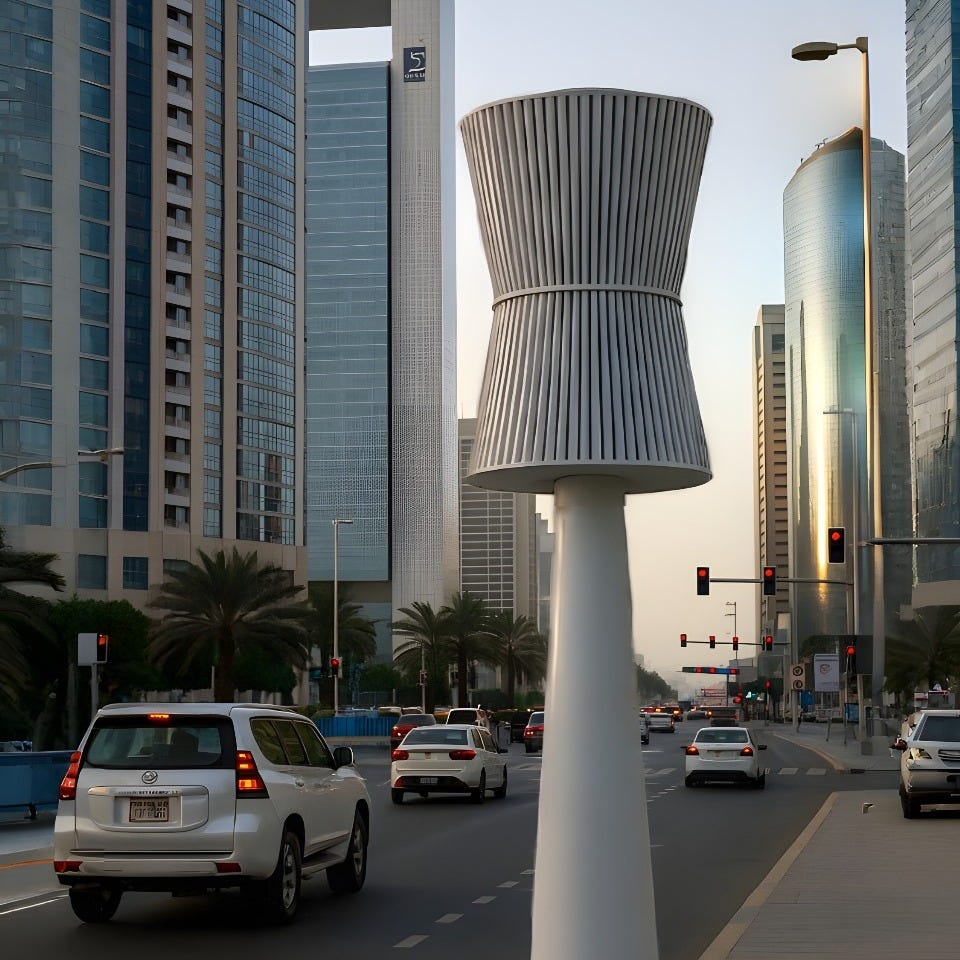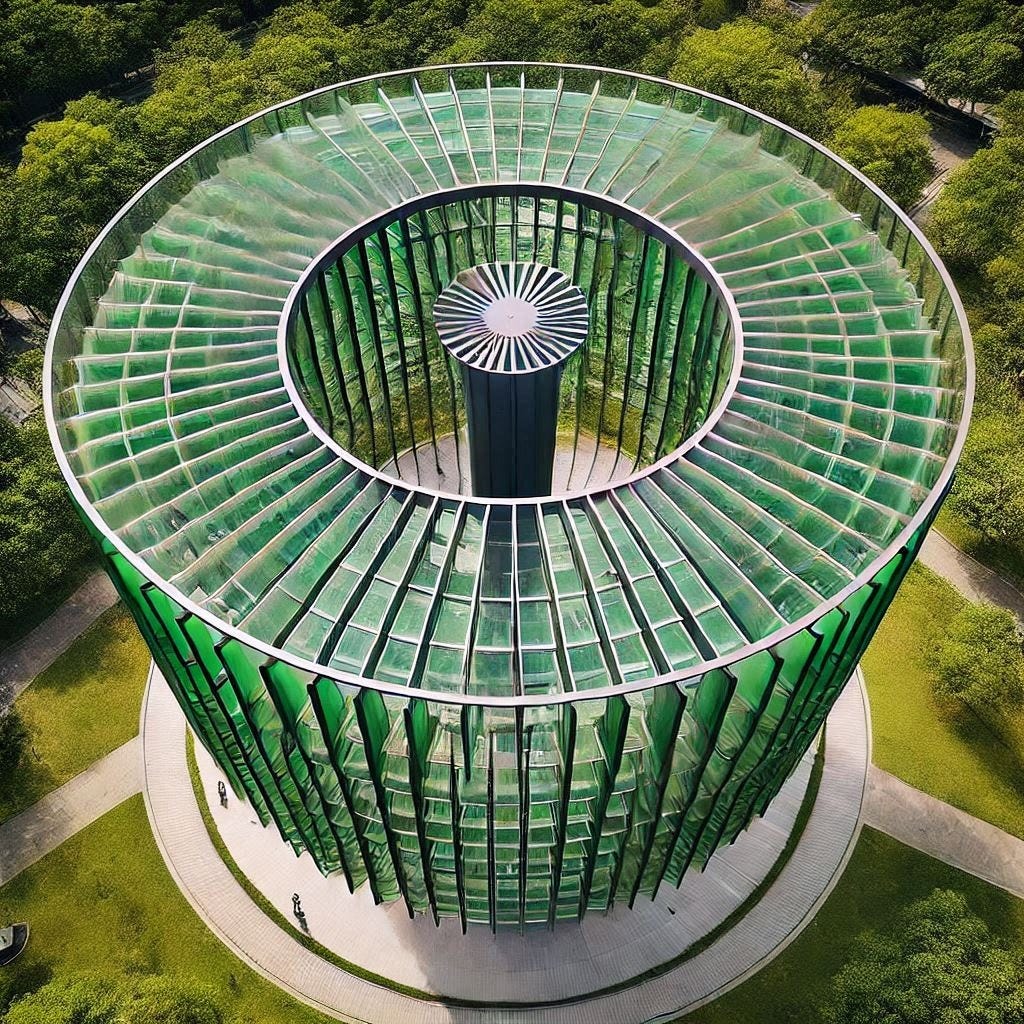Breathing trees and living walls: Can airports become carbon sinks?
With algae that photosynthesise 400x faster than trees, Carbelim envisions a future where your layover helps cool the planet.
Imagine travelling to the airport in your Uber Green. Along the way, towering structures line airport approach roads. Not cell towers or billboards, but artificial trees that breathe. Each one captures carbon dioxide and releases oxygen equivalent to 300 mature trees, while its green glow signals active air purification in progress.
Franklin Francis from the start-up Carbelim wants installations like this to become commonplace at airports within the decade.
Francis, who is Executive Vice President at the company, believes that Carbelim’s offerings provide airports with a richer and more innovative sustainability solution than simply relying on traditional carbon offsets and / or renewable energy.
The technology
Carbelim's approach centres on microscopic microalgae that, according to the startup, perform photosynthesis 400 times more efficiently than trees. The company integrates these biological systems into building facades, standalone towers, and modular units that can be customised for different environments.
"Eighty per cent of the oxygen we breathe comes from oceans, and algae are the major contributors," explains Francis, who heads the company's Abu Dhabi operations.
Unlike traditional HVAC systems that filter existing air, he claims their technology generates new oxygen while capturing CO2 directly from the atmosphere, up to 1.5 million litres of oxygen annually per unit, while sequestering 330kg of CO2.
The systems are designed for energy efficiency, with each unit consuming less power than a standard LED television. Solar panels can be integrated to make installations self-sufficient, particularly appealing for outdoor applications where grid connection might be challenging.
The resulting captured biomass doesn't go to waste. Carbelim converts it into commercial products, including vegan omega oils, fish feed, and biogas in colder climates. This circular economy approach aims to make the systems economically viable rather than just environmental add-ons, with facade installations priced at around $800 per square foot, while smaller standalone units start at $10,000.
The startup, which received $350k in pre-seed funding, was recently a semi-finalist at MIT Solve's 2025 Global Challenge and won recognition as a top-10 startup in the MENA region at Abu Dhabi's World Future Energy Summit.
Industry context and challenges
Francis envisions multiple deployment scenarios for airports, each customisable to specific requirements.
At one major airport, Carbelim recently proposed installing its systems in smoking lounges, enclosed spaces where air quality challenges are most acute. According to the company's airport prospectus, "Each smoking room can have air quality that's 50 times worse than busy city streets," with PM2.5 concentrations reaching 532.5 µg/m³: 23 times higher than WHO standards.
Beyond indoor applications, airports offer ideal real estate for larger installations. Those towering "mechanical trees" could line car parks and approach roads, while modular bus shelter designs could enhance passenger waiting areas. Francis describes recent discussions in São Paulo about producing 100 bus shelter installations, each providing the environmental impact of 30 trees.
The appeal for airport operators is clear: biological air purification offers something conventional sustainability measures lack—immediate visual impact and passenger engagement. Unlike rooftop solar panels or behind-the-scenes energy efficiency upgrades, living walls and mechanical trees create talking points that reinforce an airport's green credentials with every traveller who passes by.
The real-time monitoring capabilities may prove equally valuable. As airports increasingly report detailed environmental metrics to stakeholders, having comprehensive air quality data from multiple locations provides both operational insights and powerful marketing material.
Yet challenges remain significant. Bloomberg estimates 800 companies now operate in the broader carbon capture space, while biological systems introduce maintenance and regulatory hurdles in aviation's safety-critical environment. The technology remains in pilot phase, with Carbelim actively seeking demonstration partners and expecting to complete product development within the next few weeks.
Looking forward
The Middle East's growing investment in green technology adds another dimension, with regional airports seeking to demonstrate climate commitment following the COP28 legacy goals established when the UAE hosted the UN climate conference.
"Airports will be the ideal partner for us," Francis says, reflecting how aviation infrastructure increasingly serves as a proving ground for emerging sustainability technologies.
The real test will come in pilot deployments, where theoretical performance meets operational reality. However, for airports seeking both environmental impact and visible sustainability leadership, Carbelim's living systems offer an intriguingly innovative approach.






